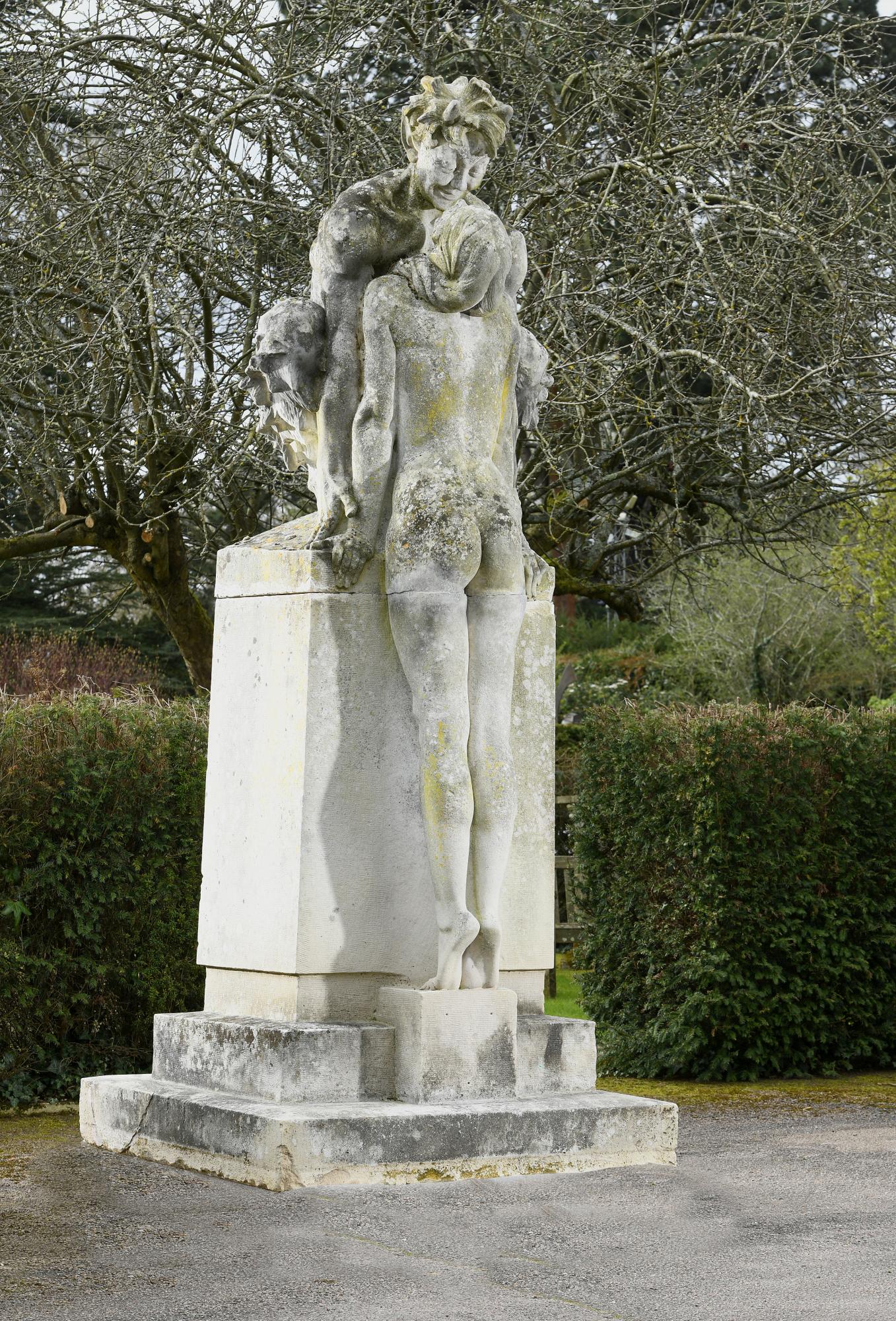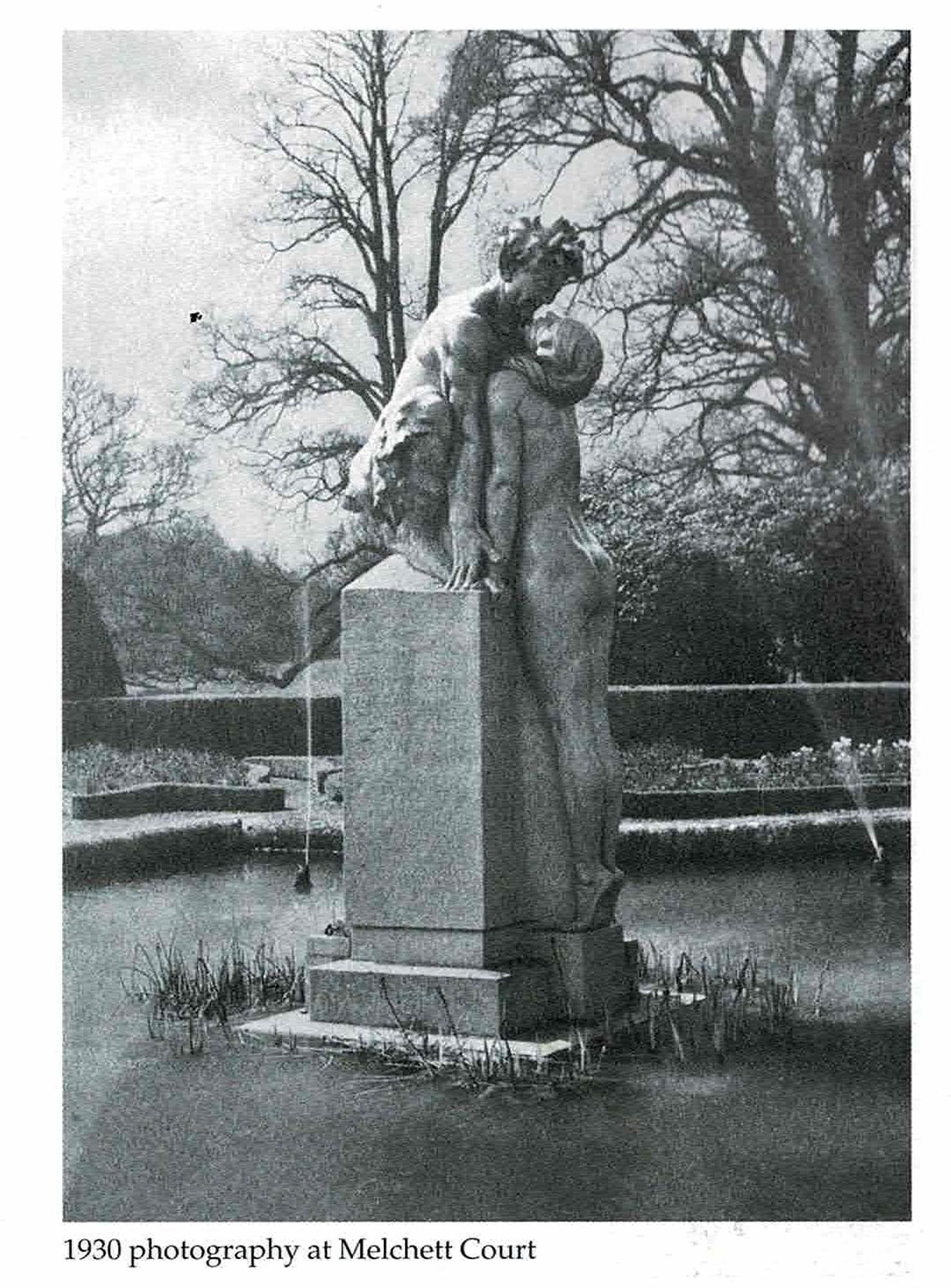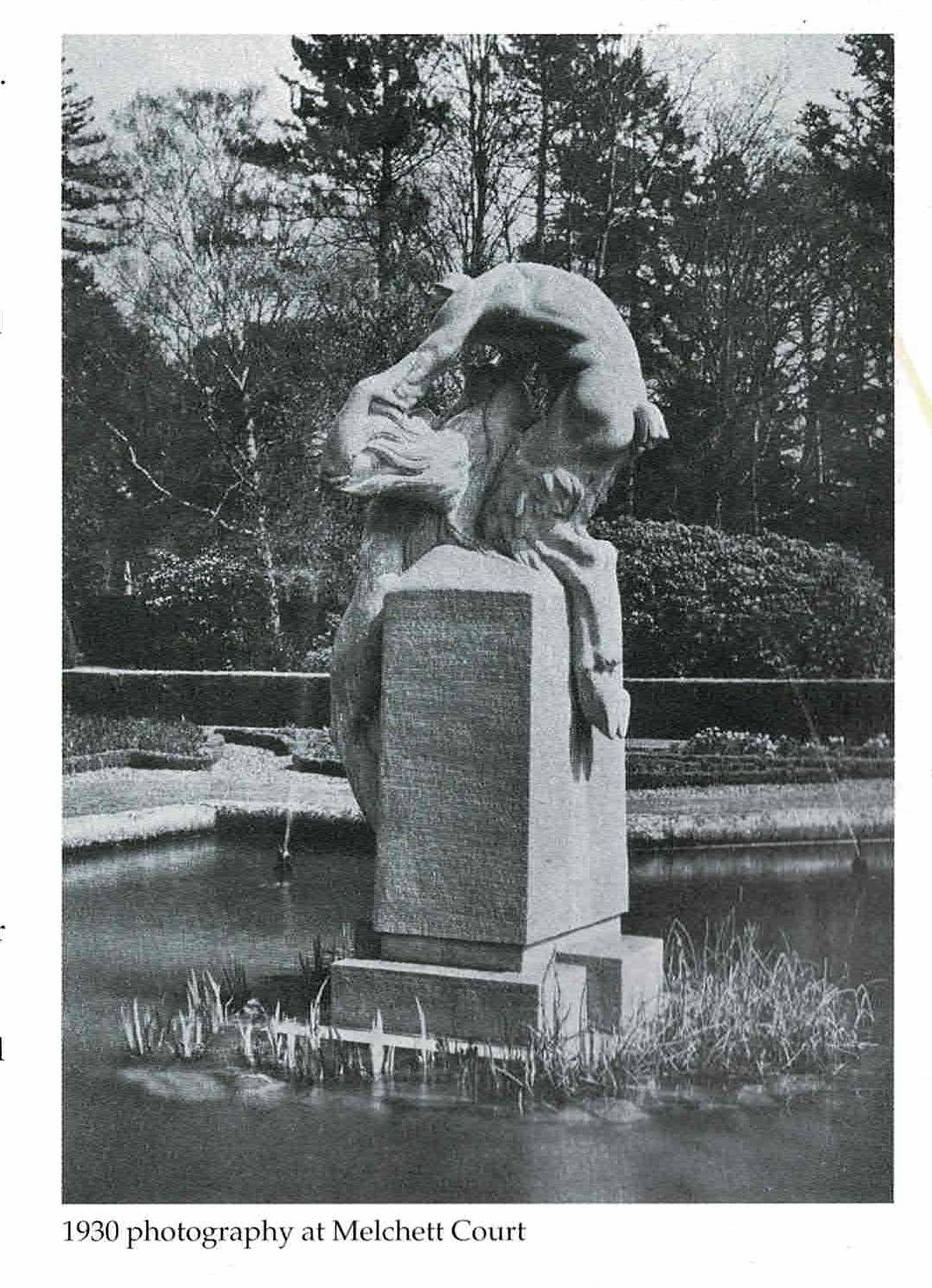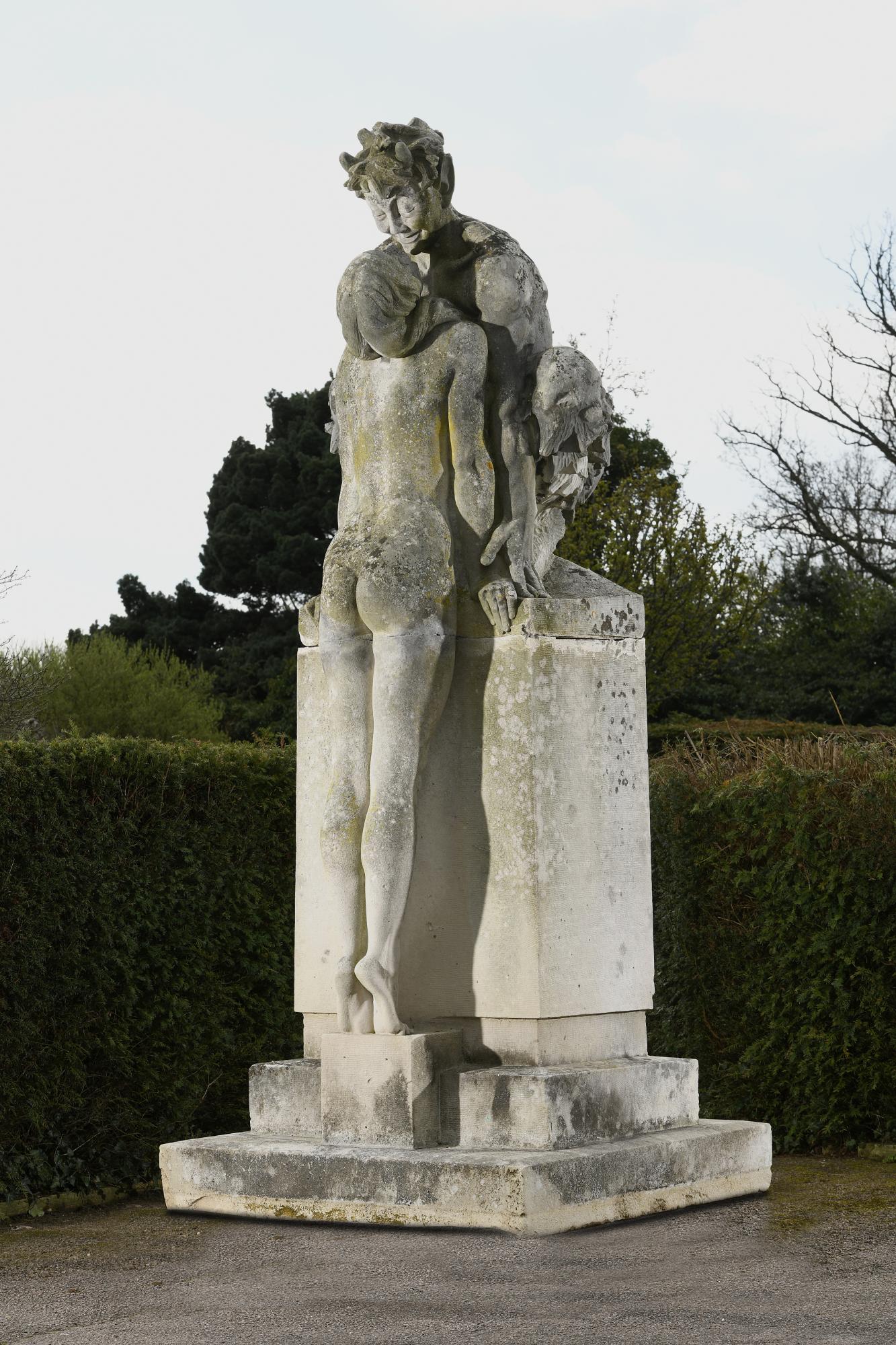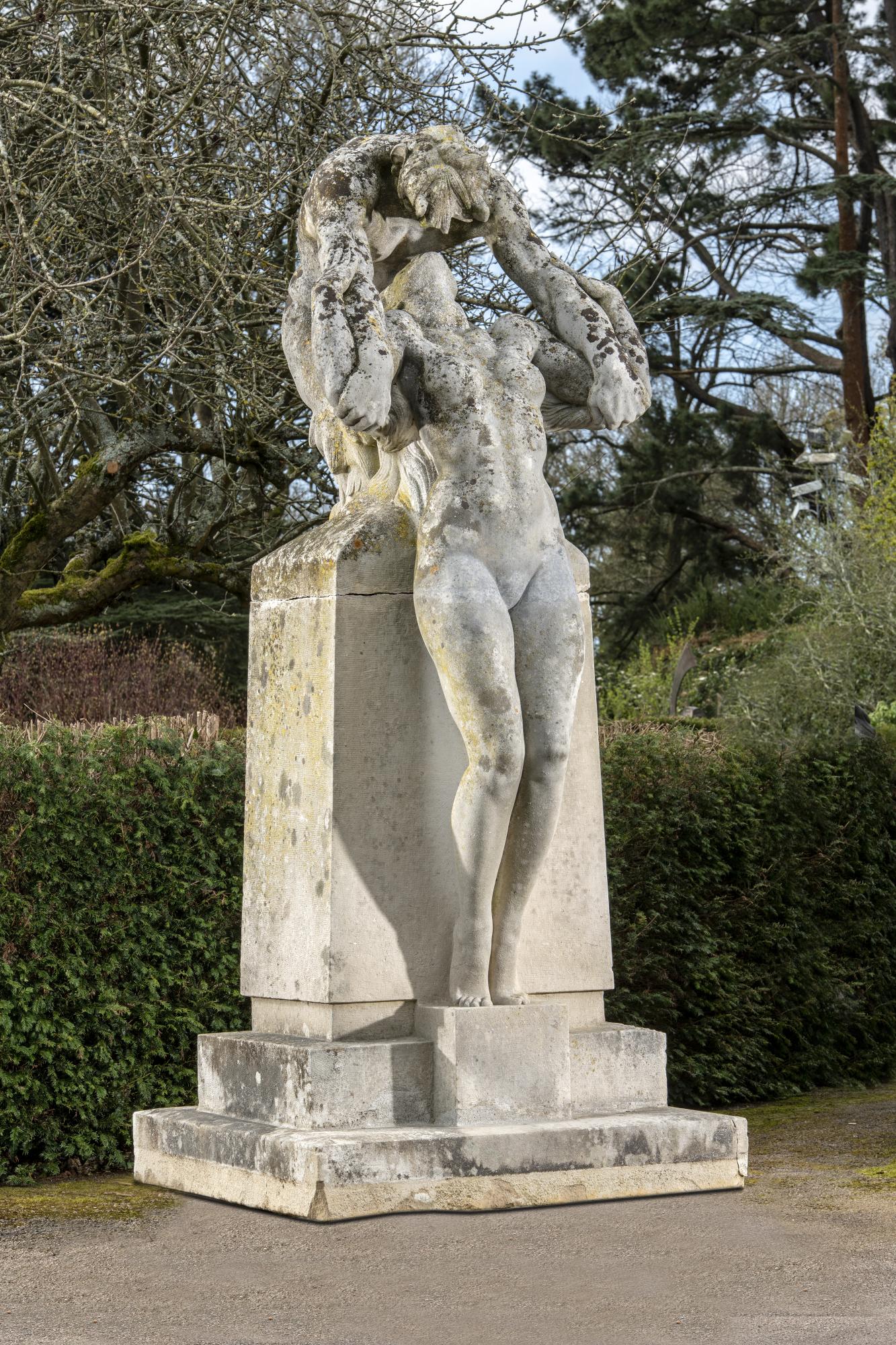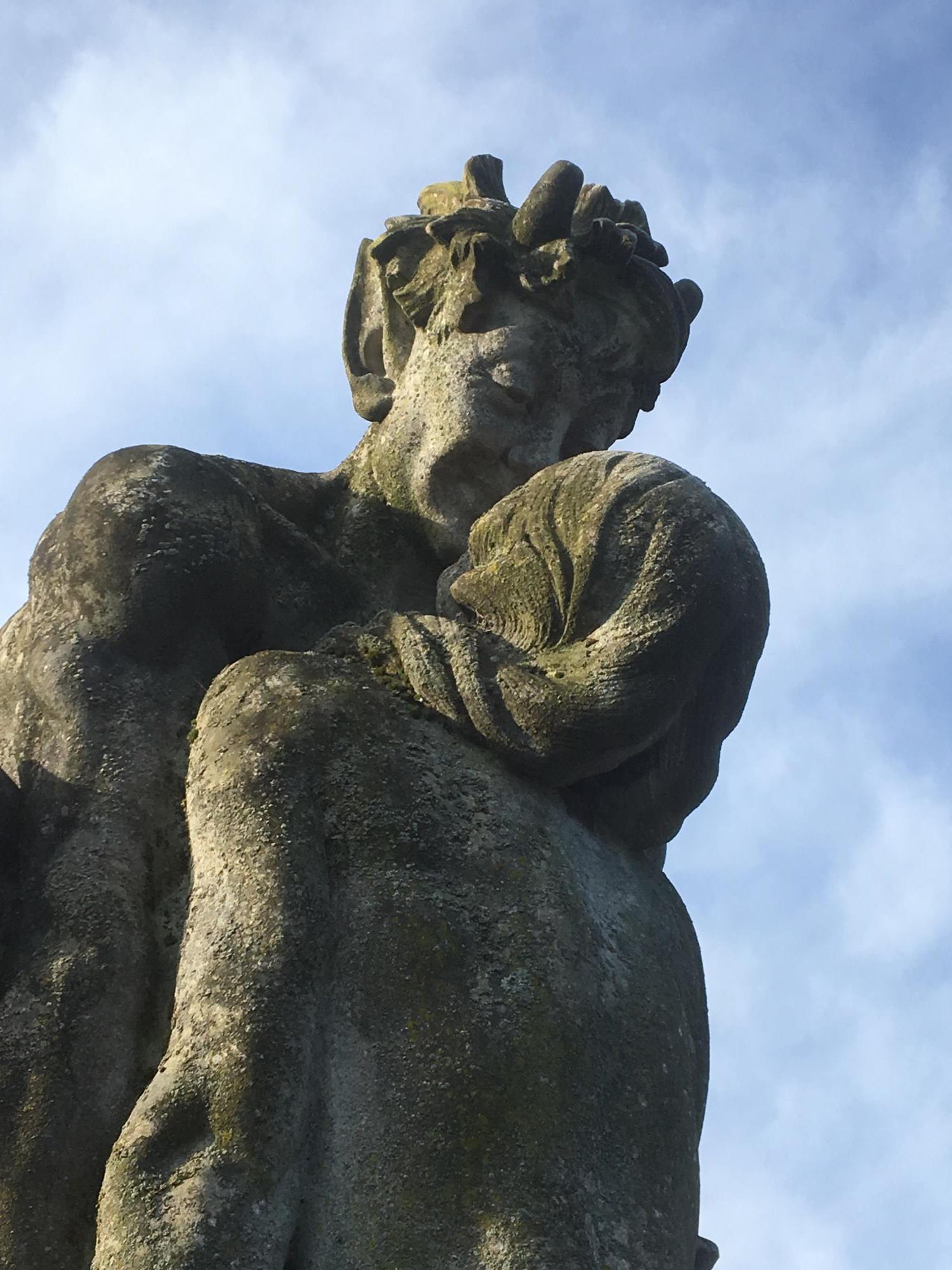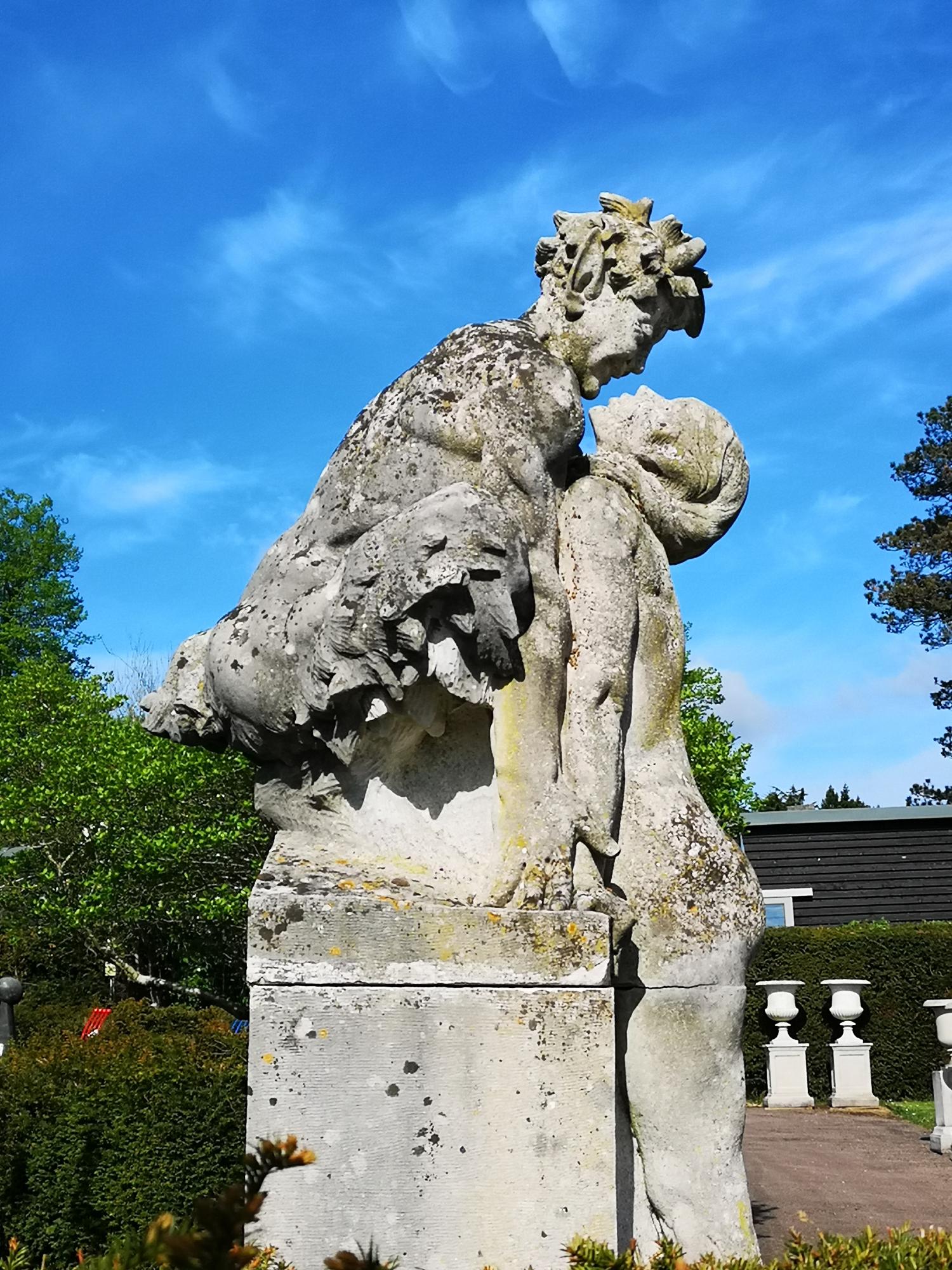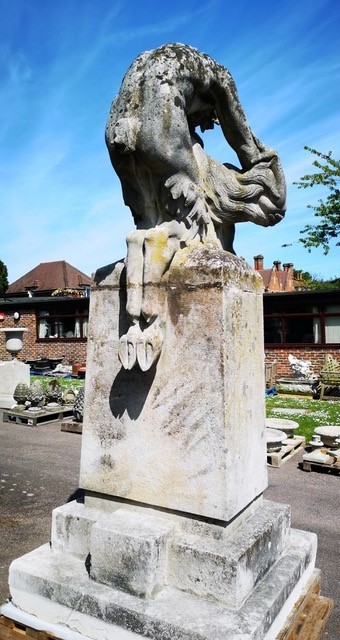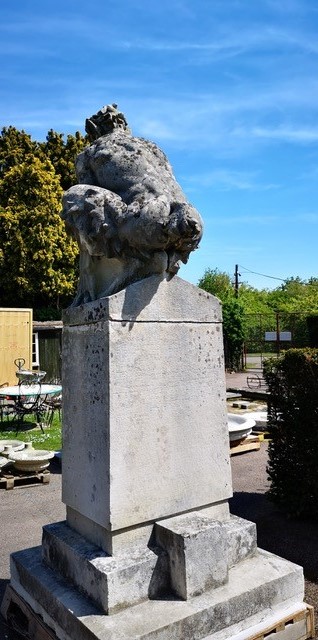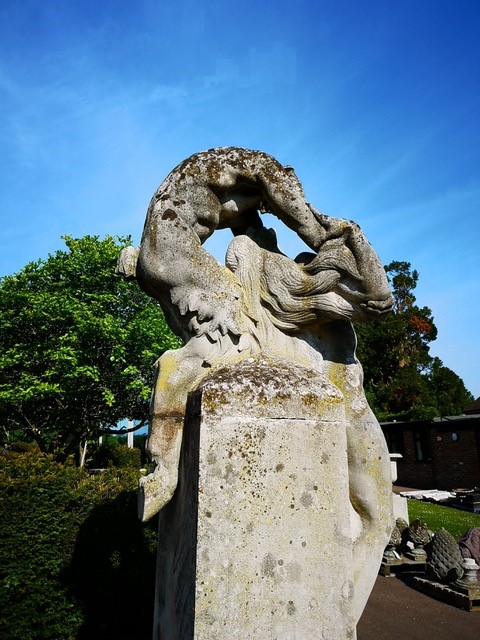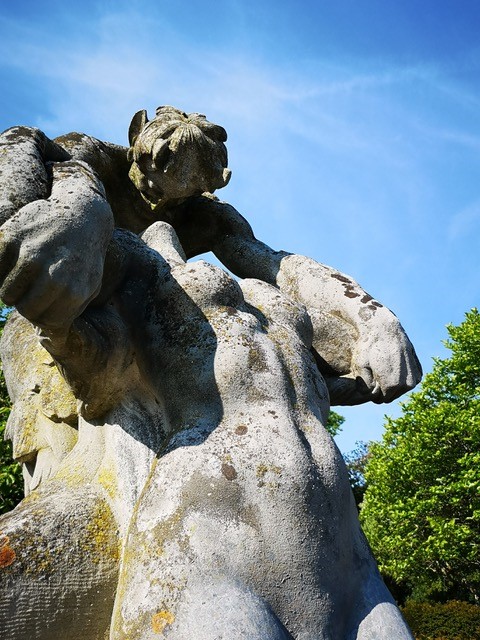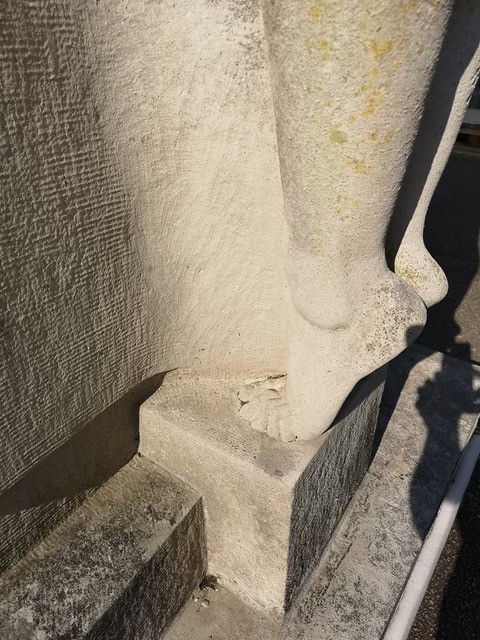30
Garden Statues: ‡ Charles Sargeant Jagger (1885-1934): A pair of rare Portland stone groups
Home, Garden & Natural History 11th June 2019
Sale Date(s)
Venue Address
General delivery information available from the auctioneer
We are happy to arrange shipping quotations and have extensive experience in working in conjunction with leading domestic and international shippers. There is no charge for arranging quotations.
For a shipping form please click here.
Collection and Storage
On receipt of cleared funds, lots can be collected from the Walled Garden, Summers Place, Billingshurst, West Sussex, RH14 9AB. Collection of lots is strictly by prior appointment. If Lots have not been collected within 35 days of the auction date then storage charges may be applied at a rate of £10 per Lot per day. Buyers are reminded that liability for loss and damage transfers to the buyer from the fall of the hammer. Whilst the majority of lots will remain in their location until collected, Summers Place Auctions accept no responsibility for any damage which may occur, even in the event of Summers Place Auction staff assisting carriers during collection.
Summers Place Auctions also reserves the right to charge storage fees of £10.00 per lot, per week, for any pieces left at Summers Place over a longer period than six months irrespective of whether they have been entered into a sale or not.
Due to the current Government COVID-19 lockdown, Summers Place Auctions will be closed to the public, however we will facilitate the collection of purchased/unsold lots on Wednesdays and Thursdays but only by prior appointment. These collections must be booked in at least 48 hours before hand.
Carriers/buyers must conform to Covid protocol and wear masks. Whilst we will do our best to have lots ready for collection, carriers/buyers must also supply sufficient labour to load purchased pieces without any additional help from our staff, other than loading pieces on pallets with our forklift truck.
Important Information
Key
We do not accept any credit cards for payment of lots purchased
Buyers Premium payable by the buyer of each lot is at a rate of 25% on the first £50,000, then 20% up to £250,000 and 12% on the amount by which the hammer price exceeds £250,000, plus an amount in respect of VAT thereon.
Lots with a † symbol – These lots will be sold under the normal UK VAT rules and VAT will be charged at 20% on both the hammer price and buyer’s premium
Lots with a ‡ symbol – These lots have been imported under TI subject to 5% import VAT
Lots with ▲ These lots are subject to a payment of the Artist’s Resale Right at a percentage of the hammer price
Buyers Premium: 25% on the first £50,000 20% £50,001-£250,000
Please note that all lots are sold subject to our conditions of business for buyers and authenticity guarantee, which are available from Summers Place Auctions office on request
Lots indicated with a (†) symbol will be sold under the normal UK VAT rulres and VAT will be charged at 20% on both the hammer price and buyer’s premium
Lots indicated with (‡) symbol, these have been imported from outside the EU to be sold at auction under temporary importation. When Summers Place Auctions Ltd release such property to buyers in the UK, the buyer will become the importer and must pay Summers Place Auctions Ltd import VAT at 5% on the hammer price
Property with ▲ These lots are subject to a payment of the Artist’s Resale Right at a percentage of the hammer price
Shipping
Summers Place Auctions are happy to arrange shipping quotations and have extensive experience in working in conjunction with leading domestic and international shippers. There is no charge for arranging quotations. We are happy to provide advice on any lots, to overseas buyers concerning export restrictions. However, it is ultimately the buyers responsibility to satisfy themselves that the correct licenses can be obtained prior to bidding.
Terms & Conditions
Conditions of Business for Buyers
1. INTRODUCTION
The contractual relationship of Summers Place Auctions Ltd and Sellers with prospective Buyers is governed by:-
these Conditions of Business for Buyers; the Conditions of Business for Sellers displayed in the saleroom and available from Summers Place Auctions Ltd
Summers Place Auctions Ltd ‘s Authenticity Guarantee; any additional notices and terms printed in the sale catalogue, in each case as amended by any saleroom notice or auctioneer's announcement.
As auctioneer, Summers Place Auctions Ltd acts as agent for the Seller. Occasionally, Summers Place Auctions Ltd may own or have a financial interest in a lot.
This auction is conducted by Summers Place Auctions Ltd in accordane with our Conditions of Business on this web site and in the printed catalogue.
All questions and comments relating to the operation of our sale or to their content should be addressed to Summers Place Auctions Ltd and not Sotheby's
2. DEFINITIONS
"Bidder" is any person making, attempting or considering making a bid, including Buyers; "Buyer" is the person who makes the highest bid or offer accepted by the auctioneer, including a Buyer’s principal when bidding as agent; "Seller" is the person offering a lot for sale, including their agent, or executors; "Buyer’s Expenses" are any costs or expenses due to Summers Place Auctions Ltd from the Buyer; "Buyer’s Premium" is the commission payable by the Buyer on the Hammer Price or winning sealed bid price at the rates set out in the Guide for Prospective Buyers; "Hammer Price" is the highest bid for the Property accepted by the auctioneer at the auction or the post auction sale price; "Purchase Price" is the Hammer Price plus applicable Buyer’s Premium and Buyer’s Expenses; "Reserve Price" (where applicable) is the minimum Hammer Price at which the Seller has agreed to sell a lot.
The Buyer’s Premium, Buyer’s Expenses and Hammer Price are subject to VAT, where applicable.
3. EXAMINATION OF LOTS (NOT RELEVANT FOR TIMED AUCTIONS)
Summers Place Auctions Ltd knowledge of lots is partly dependent on information provided by the Seller and Summers Place Auctions Ltd is unable to exercise exhaustive due diligence on each lot. Each lot is available for examination before sale. Bidders are responsible for carrying out examinations and research before sale to satisfy themselves over the condition of lots and accuracy of descriptions.
All oral and/or written information provided to Bidders relating to lots, including descriptions in the catalogue, condition reports or elsewhere are statements of Summers Place Auctions Ltd opinion and not representations of fact. Estimates may not be relied on as a prediction of the selling price or value of the lot and may be revised from time to time at Summers Place Auctions Ltd absolute discretion.
4. EXCLUSIONS AND LIMITATIONS OF LIABILITY TO BUYERS
Summers Place Auctions Ltd shall refund the Purchase Price to the Buyer in circumstances where it deems that the lot is a Counterfeit, subject to the terms of Summers Place Auctions Ltd Authenticity Guarantee.
Subject to Condition 4(a), neither Summers Place Auctions Ltd nor the Seller:-
is liable for any errors or omissions in any oral or written information provided to Bidders by Summers Place Auctions Ltd, whether negligent or otherwise; gives any guarantee or warranty to Bidders and any implied warranties and conditions are excluded (save in so far as such obligations cannot be excluded by English law), other than the express warranties given by the Seller to the Buyer (for which the Seller is solely responsible) under the Conditions of Business for Sellers; accepts responsibility to Bidders for acts or omissions (whether negligent or otherwise) by Summers Place Auctions Ltd in connection with the conduct of auctions or for any matter relating to the sale of any lot.
Without prejudice to Condition 4(b), any claim against Summers Place Auctions Ltd and/ or the Seller by a Bidder is limited to the Purchase Price for the relevant lot. Neither Summers Place Auctions Ltd nor the Seller shall be liable for any indirect or consequential losses.
Nothing in Condition 4 shall exclude or limit the liability of Summers Place Auctions Ltd or the Seller for death or personal injury caused by the negligent acts or omissions of Summers Place Auctions Ltd or the Seller.
5. BIDDING AT AUCTION (NOT RELEVANT FOR TIMED AUCTIONS)
Summers Place Auctions Ltd has absolute discretion to refuse admission to the auction. Before sale, Bidders must complete a Registration Form and supply such information and references as Summers Place Auctions Ltd requires. Bidders are personally liable for their bid and are jointly and severally liable with their principal, if bidding as agent (in which case Summers Place Auctions Ltd’s prior and express consent must be obtained).
Summers Place Auctions Ltd advises Bidders to attend the auction, but Summers Place Auctions Ltd will endeavour to execute absentee written bids provided that they are, in Summers Place Auctions Ltd’s opinion, received in sufficient time and in legible form.
When available, written and telephone bidding is offered as a free service at the Bidder’s risk and subject to Summers Place Auctions Ltd’s other commitments; Summers Place Auctions Ltd is therefore not liable for failure to execute such bids. Telephone bidding may be recorded.
6. IMPORT, EXPORT AND COPYRIGHT RESTRICTIONS
Summers Place Auctions Ltd and the Seller make no representations or warranties as to whether any lot is subject to import, export or copyright restrictions. It is the Buyer's sole responsibility to obtain any copyright clearance or any necessary import, export or other licence required by law, including licenses required by law under the International Trade in Endangered Species (CITES).
7. CONDUCT OF THE AUCTION
The auctioneer has discretion to refuse bids, withdraw or re-offer lots for sale (including after the fall of the hammer) if (s)he believes that there may be an error or dispute, and may also take such other action as (s)he reasonably deems necessary.
The auctioneer will commence and advance the bidding in such increments as (s)he considers appropriate and is entitled to place bids on the Seller’s behalf up to the Reserve Price for the lot, where applicable.
Subject to Condition 7(a), the contract between the Buyer and the Seller is concluded on the striking of the auctioneer's hammer.
Any post-auction sale of lots shall incorporate these Conditions of Business.
8. PAYMENT AND COLLECTION
Unless otherwise agreed in advance, payment of the Purchase Price is due in pounds sterling immediately after the auction (the "Payment Date").
Title in a lot will not pass to the Buyer until Summers Place Auctions Ltd has received the Purchase Price in cleared funds. Summers Place Auctions Ltd will not release a lot to a Buyer before payment.
The refusal of any licence or permit required by law, as outlined in Condition 6, shall not affect the Buyer’s obligation to pay for the lot, as per Condition 8(a).
The Buyer must arrange collection of lots within 35 working days of the auction. Purchased lots are at the Buyer's risk from the fall of the hammer.
All packing and handling of lots is at the Buyer's risk. Summers Place Auctions Ltd will not be liable for any acts or omissions of third party removers or shippers.
9. REMEDIES FOR NON-PAYMENT
Without prejudice to any rights that the Seller may have, if the Buyer without prior agreement fails to make payment for the lot within 5 working days of the auction, Summers Place Auctions Ltd may in its sole discretion exercise one or more of the following remedies:-
store the lot at its premises or elsewhere at the Buyer’s sole risk and expense; cancel the sale of the lot; set off any amounts owed to the Buyer by Summers Place Auctions Ltd against any amounts owed to Summers Place Auctions Ltd by the Buyer for the lot; reject future bids from the Buyer; charge interest at 4% per annum above NatWest Bank Base Rate from the Payment Date to the date that the Purchase Price is received in cleared funds; re-sell the lot by auction or privately, with estimates and reserves at Summers Place Auction Ltd.’s discretion, in which case the Buyer will be liable for any shortfall between the original Purchase Price and the amount achieved on re-sale, including all costs incurred in such re-sale; Exercise a lien over any Buyer’s Property in Summers Place Auctions Ltd’s possession, applying the sale proceeds to any amounts owed by the Buyer to Summers Place Auctions Ltd . Summers Place Auctions Ltd shall give the Buyer 14 days written notice before exercising such lien; commence legal proceedings to recover the Purchase Price for the lot, plus interest and legal costs; disclose the Buyer’s details to the Seller to enable the Seller to commence legal proceedings.
10. FAILURE TO COLLECT PURCHASES
If the Buyer pays the Purchase Price but does not collect the lot within 35 days of the auction, the lot will be stored at the Buyer's expense and risk at Summers Place Auctions Ltd’ s premises or in independent storage.
If a lot is paid for but uncollected within 6 months of the auction, following 60 days written notice to the Buyer, Summers Place Auctions Ltd will re-sell the lot by auction or privately, with estimates and reserves at Summers Place Auctions Ltd’s discretion. The sale proceeds, less all Summers Place Auctions Ltd’s costs, will be forfeited unless collected by the Buyer within 2 years of the original auction.
11. DATA PROTECTION
Summers Place Auctions Ltd will use information supplied by Bidders or otherwise obtained lawfully by Summers Place Auctions Ltd for the provision of auction related services, client administration, marketing and as otherwise required by law.
By agreeing to these Conditions of Business, the Bidder agrees to the processing of their personal information and to the disclosure of such information to third parties world-wide for the purposes outlined in Condition 11(a) and to Sellers as per Condition 9(i).
12. MISCELLANEOUS
All images of lots, catalogue descriptions and all other materials produced by Summers Place Auctions Ltd are the copyright of Summers Place Auctions Ltd .
These Conditions of Business are not assignable by any Buyer without Summers Place Auctions Ltd’s prior written consent, but are binding on Bidders' successors, assigns and representatives.
The materials listed in Condition 1(a) set out the entire agreement between the parties.
If any part of these Conditions of Business be held unenforceable, the remaining parts shall remain in full force and effect.
These Conditions of Business shall be interpreted in accordance with English Law, under the exclusive jurisdiction of the English Courts, in favour of Summers Place Auctions Ltd .




























.png)
